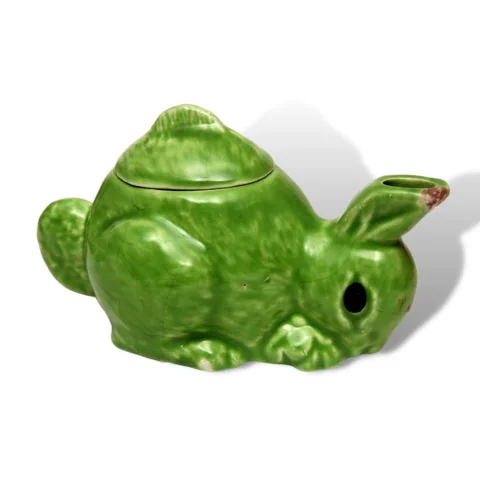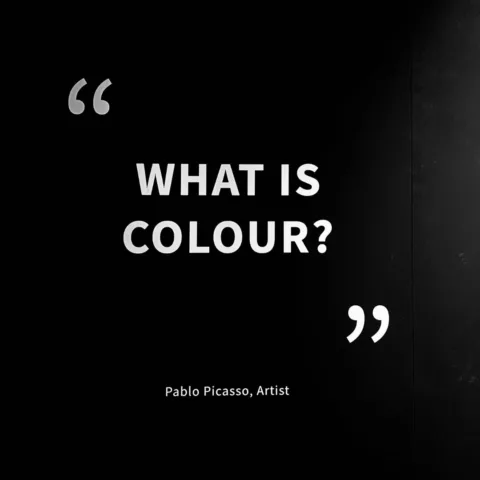The Bowes Museum Blog

An Introduction to Delftware & the Haarlem Plates
Delftware originates from the Netherlands and is a form of tin-glazed ceramics. True Delftware comes from the small town of Delft in Holland, where at its peak in 1700, there were 33 factories. The charming town with its pottery factories and shops makes for an interesting day trip from Amsterdam. Delftware forms a link both historically and artistically between two other types of ceramics, Italian maiolica and English porcelain.
Maiolica is a type of earthenware with a tin-glazed finish on the front, which gives it a white appearance and on the back it is covered with a lead glaze. The lead glaze is transparent and less expensive for manufacturers to use. To produce maiolica it is open-fired in a kiln, this means that nothing surrounds the plate or object to protect it. It is held up on three trivets that leave three equally distant marks on the front of the plate. Maiolica is thick-bodied and was used to make a lot of practical household objects such as jugs and dishes. Until 1620 the maiolica technique, imported from Italy, was the only technique used in the Netherlands. It was first aimed at the upper levels of society but as it gradually improved in sophistication, various qualities and price ranges mean that most people could afford some standard of maiolica.

Padua Maiolica Plate, 1577, The Bowes Museum, X.2065
Faience is a type of earthenware that is tin-glazed all over the front and back. This gives its initial appearance, before it is decorated, an all over white finish. It also differs from maiolica in the firing process. Earthenware cases called saggers are used to surround the pieces of faience. The object is placed inside the sagger and supported by three triangular pegs that are inserted through the walls of the case.
The luxury ceramics market was dominated by Chinese porcelain. This was far more refined than even the best maiolica. It was only affordable to the very wealthiest in society but impressed many with the quality of workmanship and attention to detail. By 1630 imports of Chinese porcelain had risen to around 250,000 objects per year. The Dutch ceramics industry anticipated difficult times ahead if this were to continue.
A civil war broke out in China, and brought imports of porcelain almost to a complete standstill. Maiolica makers seized this new gap in the market as an opportunity. They refined the production of maiolica to match the quality of Chinese imports, establishing a unique position in the European market. Delftware was born.


Pair of Chinese Vases from the Lady Ludlow Collection, The Bowes Museum, X.6169/1-2
Several technical developments had to be made to compete with the quality of Chinese porcelain. A new blend of clays produced a fine, yellow firing mixture that enabled the potters to throw and mould objects with thinner walls. The wares were then given a white tin glaze on both sides and were fired in the kiln in sagger containers much like the faience process. The saggers protected the glaze from fumes and overheating. Since the wares rested on pegs inside the containers, the fronts of the dishes were immaculately smooth and unscarred. The dishes were hand painted, and covered with a clear glaze. This gave depth to the fired surface and smoothness to the cobalt blues, ultimately creating a good resemblance to porcelain.
Delftware remained extremely popular until the end 18th century when it lost its place to English porcelain and production began to decline. During its peak production, the more affordable delftware changed the way that people served their meals. As porcelain and delftware became more affordable, people moved from eating off metal and pewter plates as they had to be scoured, whereas porcelain only needed a simple wash for it to be white and clean.
Willem Janzsoon Verstaeten
Willem Janzsoon Verstaeten was considered the most important potter in the city of Haarlem around the mid-17th century. A court case he raised against his son reveals how Delftware potters operated.
Willem began his pottery as a family business, alongside his son Gerrit. The pottery was established in Haarlem in 1625. Sadly, after 17 years of business, Willem suffered a stroke and in 1642, he handed the business over to his son. As Willem recovered he decided to start a new firm. Father and son made a contract, dividing the market so that fashionable delftware was made by the son and the father stuck to old-fashioned maiolica.
Gerrit was a strong businessman and in 1644, he made an agreement with the two largest delftware potteries in Delft. With this agreement it was clear that the three potteries dominated the Dutch market. All agree to pay their workers the same wage and not to poach each-others employees on penance of a fine of 100 guilders.
When the civil war broke out in China and imports of porcelain stopped. Willem realised he had made the wrong decision. He took his son to court to try and go back on the agreement. However the final agreement was not advantageous for Willem who was forced to continue with maiolica production and was only allowed to make Delftware with traditionally Dutch decorations.


Willem Janzsoon Verstaeten, Delftware Plate, c.1675, The Bowes Museum, X.1544
These two plates by Verstaeten are part of the Bowes Collection and are excellent examples of the Dutch Style. They were made around 1675, close to the peak of Delftware’s production. The biblical scene, the ‘Adoration of the Magi’, is typical of the Dutch style. When imports of Chinese porcelain came to a standstill, Dutch potters developed their production techniques but they didn’t make any attempt to imitate the Chinese style. Instead typically Dutch ornamental designs such as landscapes and biblical scenes were hand-painted onto the ceramics. Only objects not readily available in China such as salt cellars were decorated in the Chinese style. The rim of the dish is decorated with birds, flowers and fruits.


Willem Janzsoon Verstaeten, Delftware Plate, c.1675, The Bowes Museum, X.1545
The second plate is decorated in a similar fashion. The rim of the dish is painted with birds and flowers and in the centre of the dish there is a biblical scene from the book of John. The scene depicts the story, called, Women taken in adultery, and there is an inscription which reads, ‘he that is without sin’. The back of the plates both have metals hooks pierced through small holes in the ceramic. This shows that the dishes were decorative and would not have been used for dining. They would most likely have hung one below the other on the wall of the home.
Upon Willems death and followed by his son’s death, two years later, production of tin glazed pottery and tiles at the factories came to an end.
Today we are able to regard the decision from the Haarlem court case as a blessing because it has resulted in a remarkable group of dishes, including the ones we have on display today.
By Caroline Potts, Curatorial Intern







